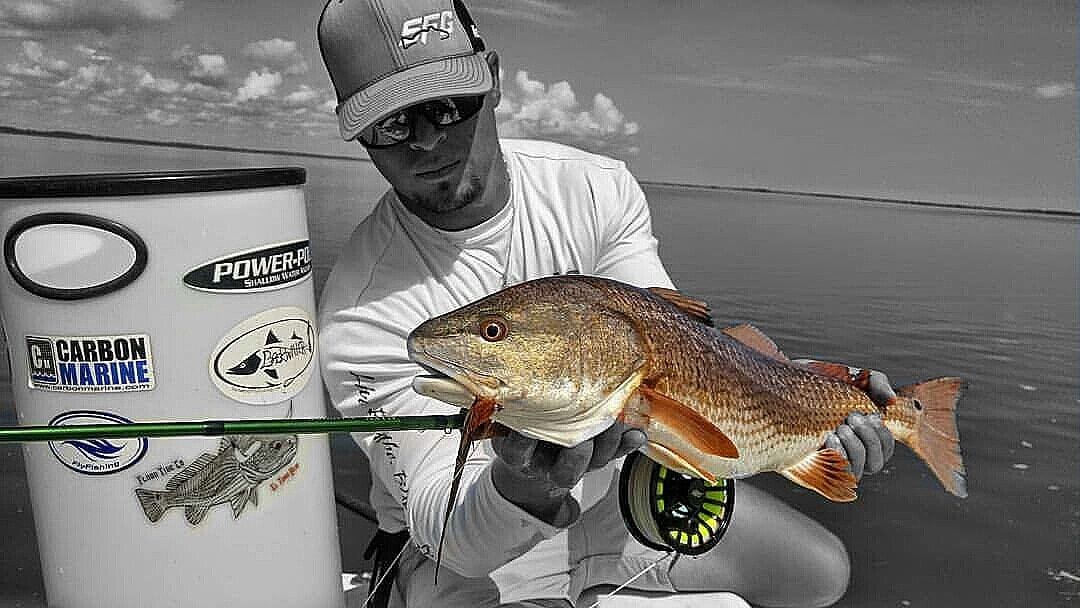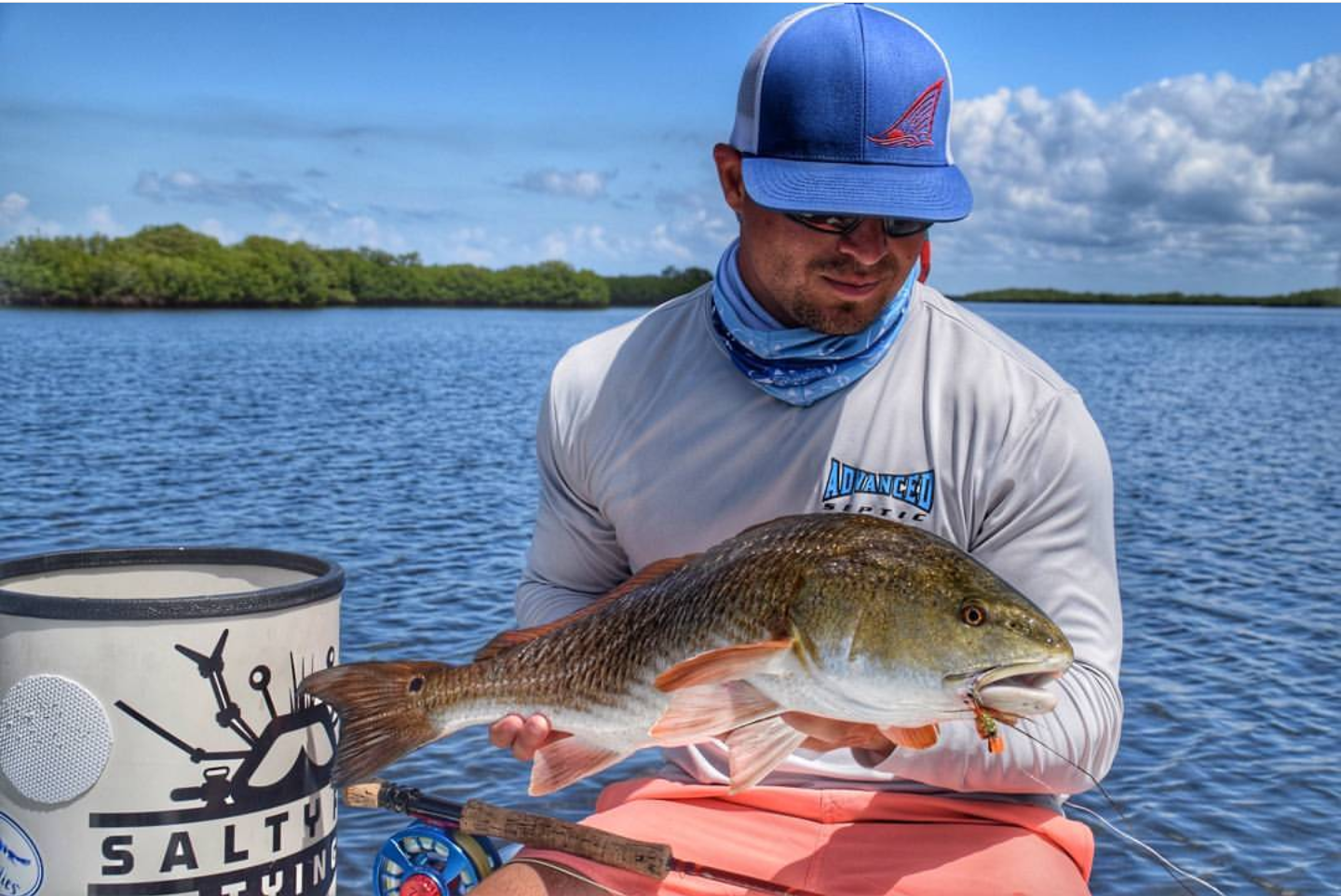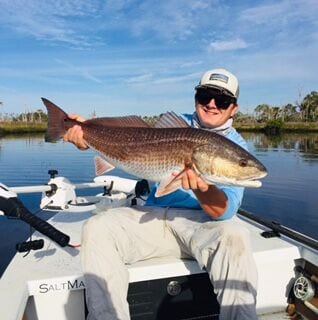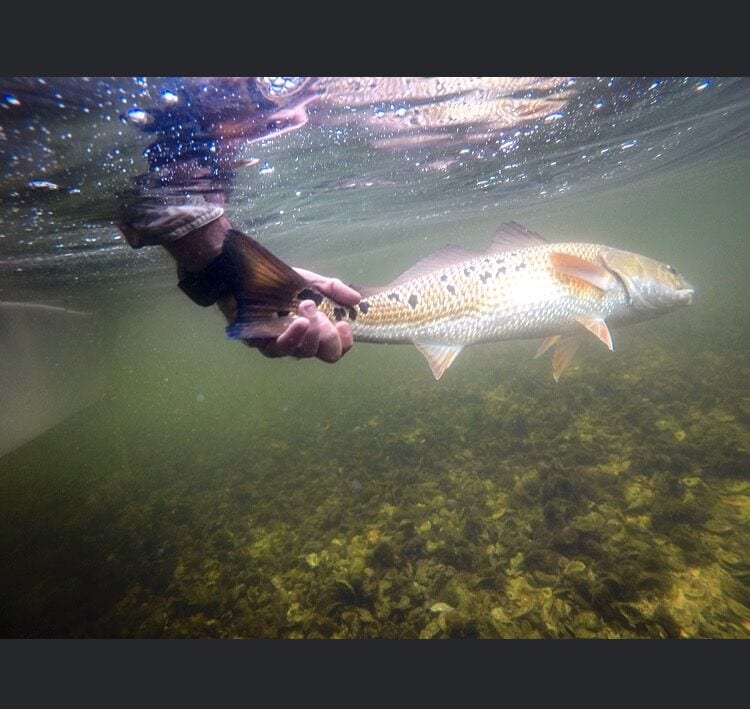Late Winter Redfish On Fly
Late winter brings the coldest water temperatures of the year to the nature coast, making for some tough fishing conditions. Thankfully, this year has been considerably warmer than last, nevertheless, consistent cold fronts and prevailing northeast winds have been the trend. A redfish is most active when water temps are around 70 degrees. When exposed to temps in the 50’s, those same fish become lethargic, feeding less often. These fish can be caught, however, and under conditions that are conducive to my favorite method, sight-fishing with a fly. Lower tide heights flood less land mass, contributing to some very clear water! The shallower water also prevent reds from retreating deep into the mangroves. For anglers, this means the fish are easier to find. However, we need to adjust our tactics and employ finesse for success. The finesse approach requires scaling down tackle, using lighter leaders and much smaller bait, perfect work for the flyrod.
Stomach samples, of resident slot-reds, reveal that their forage base, almost exclusively, consists of small crustaceans. In order to increase success in late winter, matching the hatch becomes vital. A flyrod allows me to fish flies that most closely resemble those food items. Not only can I cast these nearly weightless flies the desired distance, the quiet presentation scares fewer fish. Just as important, the flyrod enables the angler to pick up, and recast in an instant, which is indispensable when reds are cruising.
When choosing fly tackle, for late winter reds, I prefer 7 weight gear for increased stealth but an 8 weight will work . I will also select a floating line with a light head such as a bonefish taper. When deciding on leader, longer and lighter will fool more fish, so a ten foot 8 lb may be needed. The cold water contains plenty of oxygen, so fighting fish to exhaustion is not a concern. When using light leaders avoid break-offs by using the best fluorocarbon material, and by tying excellent knots. Also check the leader constantly for wind-knots or knicks, and retie often.
Its been established late winter reds are going to be a challenge to catch, but they will be fairly easy to find. I look for them in the same general areas where I find them the rest of the year, but in different locations. When the water is in the reds preferred range, I will
chase them on low tide in open water, hoping to find them tailing or pushing. When winter arrives, I change the approach. Most winter low tides will be too low and the fish will disappear with the water, so I try to select periods of relatively higher water and concentrate my efforts on afternoons when water temps climb. Paying attention to tide charts is imperative. If you experience the right tide level in the afternoon, you may find tailing fish, if not, look for any protected cove out of the wind. These locations will most often face south, due to a northeast wind. On cold mornings, the reds will be found in these coves, dug in under the weeds, completely out of sight, but as temps rise, they will begin foraging. Slowly push into the deepest part of the cove and look for the mullet. The reds rely on the tight mullet schools, not only to kick up food, but also as cover A good pair of sunglasses, a little elevation, and high sun really helps in sighting fish. My most effective fly for cold water redfishing, is a 3 inch rust colored shrimp pattern, dressed with a craft fur tail and larvae lace brush body. Important elements, to this pattern, are a wide gap hook, and a heavy dumbell eye, to keep the hook inverted, and a weed guard. This pattern looks natural and can be fished slowly and most of all it is proven.
Doug Florence/ Flatsstalker.com
capt.Doug@flatsstalker.com





